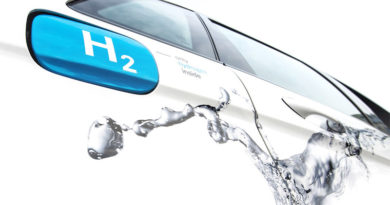
Interconnection of European Energy Networks, Foundation of Energy Security
A few weeks ago, Estonia, Lithuania and Latvia synchronised their Energy grid with the European Grid by cutting the connection to the Russian controlled BRELL System via the overhead transmission line LitPol link that connects Poland and Lithuania, which share a common border. A milestone for deepening of the European Energy Union, which would not be possible without the cooperation of European Member States. The Recent reports of destroyed subsea interconnectors in the Baltic Sea by rusty ships with estimated strong connection to Russia put not only a spotlight on the vulnerability of the European Union with regard to their critical infrastructure, it highlights also todays importance of these cross country interconnectors with regard to current European Energy Network infrastructure.
Grid interconnectors—high-voltage transmission lines for electricity and pipelines for gas and in the future hydrogen—are crucial to Europe’s energy security, economic stability, and geopolitical resilience. They facilitate cross-border energy flows, balancing supply and demand while integrating renewable energy sources.
Europe has already many electricity interconnectors helping to share power and improve energy security. For example LitPol Link (Lithuania-Poland), Estlink 1 and the recently damaged Estlink 2 between Estonia-Finland, Alegro between Belgium and Germany or the Spain-France Interconnector. More are about to come such as the Celtic Interconnector between France and Ireland. These connections help balance supply, increase the use of renewables, and make the electricity network across the EU more reliable. Electricity interconnectors enable energy diversification by allowing countries to share power, reducing dependence on single suppliers. They help balance supply and demand, preventing blackouts and stabilize the grid, especially during peak periods. For example, surplus wind power from the North Sea can be transmitted to regions with higher demand quick and stable. This has Economic and geopolitical benefits.
Cross-border electricity trading lowers energy costs and increases market efficiency, encouraging investment in renewable energy projects. Interconnectors also reduce dependence on external energy suppliers, strengthening Europe’s geopolitical resilience and security.
Every new connection point strengthens therefore the European grid. One may think, that compared to electricity, gas interconnectors play a minor role, even become obsolete, since Europe is pulling out of fossil fuels. However, this would neglect the role of hydrogen on the long run and the significance of a European pipeline grid for becoming independent from Russian gas. These pipelines allow gas to flow across borders and if needed in changing directions, ensuring supply even in times of political instability or supply disruptions. After the gas crises of 2006 and 2009, the EU reinforced its security of gas supply notably by adopting the first security of gas supply Regulation No 994/2010 in 2010. Europe has several important gas interconnectors essential for the transport of natural gas, improving energy security and supply. Some key ones include the Balticconnector between Finland and Estonia), GIPL between Poland and Lithuania, the BRUA Pipeline connecting Bulgaria, Romania, Hungary, and Austria, The Trans Adriatic Pipeline (TAP) brings gas RW03032025 2 from Azerbaijan to Greece, Albania, and Italy or the Spain-France Gas Interconnectors, which help integrate the Iberian market with the rest of Europe. These Interconnectors contributing to a stable gas flow, reduce reliance on single suppliers, and enhance energy resilience in the EU. A well-connected gas network reduces price volatility, strengthens energy trade, and provides flexibility in sourcing gas from multiple suppliers. This enhances EU solidarity, the risk preparedness and its geopolitical resilience. With the development of the European Hydrogen infrastructure on the short and on the long run, interconnectors are of great importance too.
With the creation and repurposing of new pipelines for the hydrogen grid, interconnectors on strategic entry exit points are needed. The ramp up of the hydrogen economy requires particularly in the beginning imports from third countries next to the internal production.
To not delay this ramp up of the hydrogen economy a solid infrastructure has to be build. Additionally also for transport of CO2 the lessons learnt from connecting the EU can and should be taken into account to contribute to a strong European grids from day one. As the European legislators, we will not ignore this challenge Therefore the EU calls in the grid action plan and in the affordable energy act for more interconnectors but also for more attention on the protection of the critical infrastructure online and offline. In addition, a broader energy system integration connecting electricity, gas, heat, hydrogen plus storage solutions will be of importance. In the European Parliament, we are a ready to support the Commission with our ideas to ensure that upcoming legislation make sure that interconnectors will be built on strategic places according to the needs more effective and are adequately financed. This is good for European security and the consumer.




